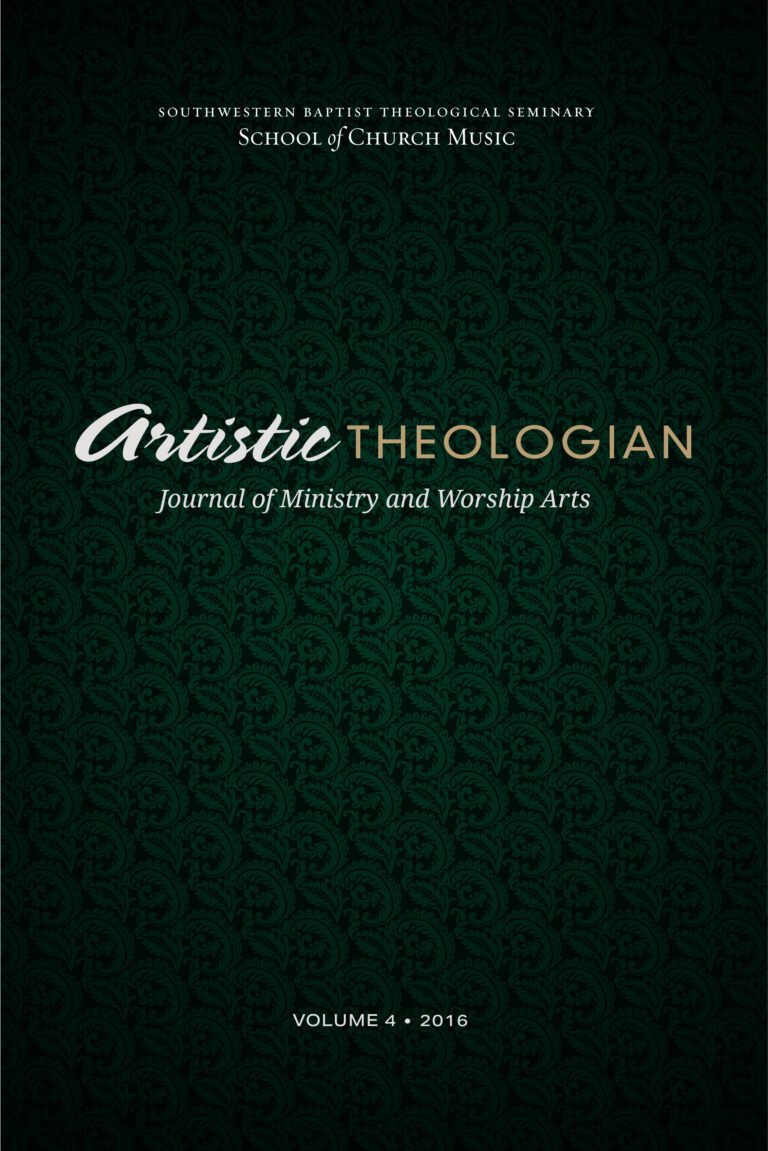
“Thus Says the Lord”: Biblical Worship in Contemporary Practice
Artistic Theologian
Volume 4, Summer 2016
Editor-in-Chief: Scott Aniol
By the Waters of Babylon: Worship in a Post-Christian Culture, by Scott Aniol. Grand Rapids: Kregel Publications, 2015. 211 pp. $17.99.
“Corporate worship must contribute to the goal of making disciples so that they might worship God acceptably by leading people to draw near to communion with God through Christ by faith using appropriate cultural expressions” (179). Scott Aniol is assistant professor of ministry and worship and chair of the music ministry department in the School of Church Music at Southwestern Baptist Theological Seminary. Aniol’s purpose for writing By the Waters of Babylon: Worship in a Post-Christian Culture is to answer the question of how Christians can worship correctly and fulfill their gospel-sharing commission in a post-Christian America. His aim is to prove that “the most missional worship is that which seeks to glorify God in making disciple worshipers by communicating God’s truth through the use of appropriate cultural forms that are regulated in Scripture” (177).
Aniol opens with an in-depth description of the missional movement’s history, theology, and relationship to surrounding cultures. Next, he explains the most prevalent views of how Christians should interact with the surrounding culture, and he expresses a biblical definition and understanding of culture. Then, Aniol defines worship according to Scripture, and he explains how corporate worship affects missions. The author closes with his support for the regulative principle, and the implication and application of his thesis.
Aniol explains how cultural forms can be biblical by arguing that “the New Testament terms most closely resembling both cultural anthropologists’ and missional authors’ definitions of ‘culture’ are those related to behavior” (95). By explaining how the biblical terms related to behavior are akin to the anthropological definition of culture, Aniol is able to expose what forms of culture are appropriate for worship. After conversion a person’s conduct will completely change. Aniol considers Christians a “new race” (94). As a new creation believers carry a different behavior or culture than that of nonbelievers.
Aniol argues that corporate worship shapes the behavior and imaginations of the congregants. He states that “corporate worship . . . actually helps to shape the behavior . . . of God’s people” (147). Because Christians are a new nation or people, they behave in homogeneous ways. This behavior should be holy, and it should be “taught through the process of discipleship” (149). The liturgy disciples the congregant by teaching him how to live the holy life demanded in Scripture. Worship also shapes the imagination. Aniol describes imagination as the way humans “interpret facts” and “make sense of truth” (154). The form of the liturgy should be chosen based upon “the criterion of whether or not they are true—whether or not they correspond to God’s reality as it is communicated aesthetically in his word” (159). Aniol’s argument that corporate worship shapes the Christian’s behavior and imagination decidedly shows how disciple worshipers are formed through the truth proclaimed in the liturgy.
The author defends his thesis by supporting the regulative principle. He states that “worship should be regulated by Scripture similarly to Israel rather than a simplistic motivation to ‘contextualize’ to the surrounding culture” (162). He argues that all the necessary instructions for worship are found in Scripture and that God rejects all elements of worship not found in the Bible. He defends the use of the regulative principle with the story of Nadab and Abihu (Lev 10:1–3) and the story of the golden calf (Deut. 9:16). Aniol also believes that a change in a form of worship could lead to the change in a prescribed element of worship. He states that “since the Bible comes to us from God as inspired content and form, Scripture should govern both aspects of corporate worship” (172). Aniol markedly defends his thesis by explaining how both the forms and content of corporate worship are regulated in Scripture.
By the Waters of Babylon is immensely biblical and thoroughly historical. Aniol supports his argument well, and his thesis and progression through the book are succinct. He is fair in his description of the missional movement despite his clear reservations and disagreements. His argument that biblical words related to behavior are akin to the anthropological definition of culture is particularly valuable, and his position that liturgy shapes the congregants is equally robust. Though extremely well written, the author could have offered more explanation in a couple of areas. The “sanctificationist approach” to culture is a great concept, but the reader desires a more detailed explanation (115–16). Likewise, common grace, as viewed by different cultural approaches, needs elucidation (75; 78).
Aniol does a superb job writing this timely book. By the Waters of Babylon is a great addition to the academic fields of liturgy, cultural anthropology, and theology. It is highly recommended to all interested in culture and worship, specifically those in charge of planning the liturgy.
John Gray
Southwestern Baptist Theological Seminary





